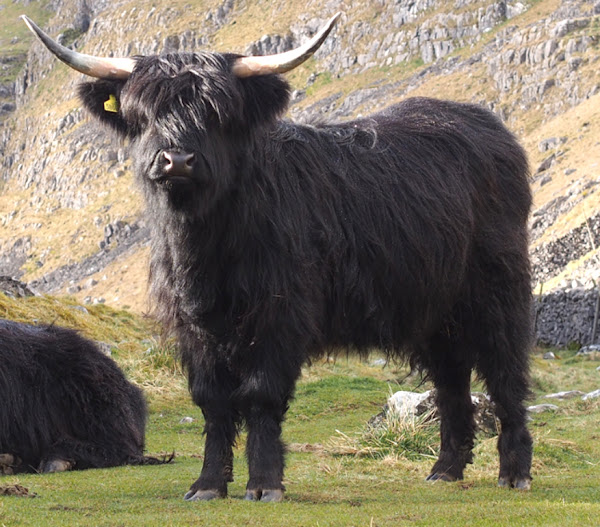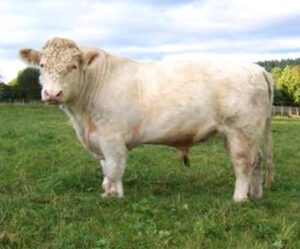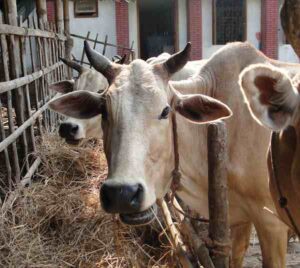The Highland cattle are a breed of cattle form Scotland which are currently raised for meat production. The breed descends from the native cattle of Scotland and it is named for the Highland region.
It was improved and standardized during the 1800s, although the early history of the breed is not well recorded.
The Highland cattle were developed from two types of now-extinct cattle, one reddish and other originally black. The original cattle were brought to Britain by Neolithic farmers.
Improvement of the breed was made through selection alone, and it never had any introductions from other cattle breeds.
The first herdbook for the breed established in 1884, and it is one of the oldest registered breed of cattle. The Highland cattle became well known in England and they were sometimes also called Kyloe cattle.
They were first imported to North America in the 1880s and importations have continued throughout the 1900s.
Today the Highland cattle are found throughout North America as well as in Australia, Europe and South America. Read more information about this cattle breed below.
Highland Cattle Characteristics
Highland cattle are medium sized animals with long wavy coats. They are usually black, red, white, brindle, yellow, silver or dun in color. Both bulls and cows usually have horns, and their horns are of long sized.

Average body height of the Highland cows is about 90-106 cm, and the bulls are typically in the range of 106-120 cm. Average live body weight of the bulls is around 800 kg. And the cows on average weight around 500 kg.[1]
Uses
The Highland cattle are a beef cattle breed. Currently they are mainly used for meat production.
Special Notes
The Highland cattle are very active and hardy animals due to their native environment in the Highlands of Scotland. They are very cold hardy animals.
They are excellent grazers and their skill in foraging for food allows them to survive in steep mountain areas where they both graze and eat plants that many other cattle avoid.
They can even dig through the snow with their horns for finding buried plants. These animals have relatively docile temperament and are of good behavior.
The cows are pretty good milkers, excellent mothers and very protective of their young. Milk of the cows is of good quality with a high butterfat content.
Currently the breed is mainly used for meat production. Total number of the animals is increasing gradually. Review full breed of this breed in the following chart.
| Breed Name | Highland | |
| Other Name | Kyloe | |
| Breed Purpose | Meat | |
| Special Notes | Excellent foragers, good milk quality, calm temperament, well adapted to native climates, good for meat | |
| Breed Size | Medium | |
| Bulls | Around 800 kg | |
| Cows | Around 500 kg | |
| Climate Tolerance | Native climates | |
| Coat Color | Usually black, red, white, brindle, yellow, silver or dun | |
| Horned | Yes | |
| Milk Yield | Average | |
| Rarity | Common | |
| Country/Place of Origin | Scotland |






